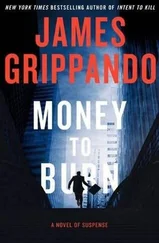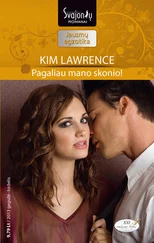In tandem with the attempts to rent an apartment for a few days, the gunmen were preparing a safe passage into Paraguay, for which they were offering an exorbitant sum. The attempts ended up in the hands of certain persons who owned an apartment in the Liberaij building (at number 1182, Julio Herrera and Obes Streets), who, it transpired, had certain connections with the police world.
A further unconfirmed version relayed that the Argentines had reached the flat thanks to a minor connection with the Uruguayan underworld and that this contact ('a patsy'), in order to rid himself of the risk posed by the Argentine gang, had acquired the lease on the flat and had immediately 'sold' the information on to the police without the original property owners or their tenants knowing who on earth the birds who had flown to seek refuge in apartment number nine at 1182 on Herrera and Obes Streets really were.
In short, it's a long and complicated story which twists and turns into and out of every nook and cranny of a nocturnal existence, where it's easy — as someone might say out of sheer neighbourliness — for the honest night-club punter to hook up with the smuggler, the assailant and the pickpocket, without realizing what their occupations are. It's left to the police to explain all that. Meanwhile, the one thing that's certain is that the Argentine criminals entered the apartment referred to above only a few minutes after ten o'clock yesterday evening.
Flat number nine is the garçonnière shared by the two farmers from the East, who had subcontracted it from the proprietor for a sum of 480 Uruguayan pesos a month. The two farmers are male cousins, both around twenty-five years old. Both, again, habitually frequent the night-club circuit and enjoy the low-life with the rent-boys from the port.
How on earth did the gunmen Brignone, Dorda and the Crow Mereles get as far as this flat, being sought on all sides by the police department? The journalist didn't know but had various hypotheses to propound.
One version recounts that the gunmen had done a purchase deal with their legitimate proprietor (a Uruguayan of Greek extraction), likewise a nocturnal animal, who lived more in Buenos Aires than in Montevideo and whose surname, it was said, could have begun with the letter 'K'.
The gunmen had handed over an initial payment of 80,000 Uruguayan pesos to 'K', without his knowing anything of their real identity, having only met up with them on their nocturnal circuit around the Old City.
Going beyond conjecture, what also seems certain is that the flat on Julio Herrera and Obes Streets was a genuine 'rat- trap' set by the police to attract the fleeing gunmen. No one knows quite how, but through some means or another, the police set things in motion so that the gunmen came to take refuge there.
One source who requested to remain anonymous says that the Argentines confided in another Uruguayan crook who turned out to be a police nark, and that he brought them to the attention of people linked to the Homicide Division.
Another version indicates that it was the police who indirectly placed the flat at the disposal of the Argentines and that they got themselves into their lair' without the least suspicion that their Uruguayan protector had sold them to their pursuers. If that's really the case — in which instance, it would be necessary to set aside the other version which says that the Argentines bought the flat with a first deposit of 80,000 Uruguayan pesos — the police no doubt operated cautiously because they knew the lay of the land and the threats posed by the fugitives.
Once these fugitives were surprised on the street, the battle was both inevitable and highly perilous for Montevideans. The police desired a situation in which the criminals would be gathered together and to this end, it was said, they had spread their nets wide from the Headquarters in the desire to hand them an apparently secure apartment on a plate — somewhere central, comfortable, furnished etc. - while the Argentines awaited the contact who was supposed to transport them, according to what Nando had told them, across to Paraguay.
If this is an accurate account of what transpired, and everything leading up to it, the timing mechanism that went into operation to detain the Argentines was triggered at exactly ten o'clock on the night of the move.
Shortly before the appointed hour, the twenty-one-year- old country girl who occupied the flat during her free hours had dressed in a light-blue-coloured suit and was ready to go out, as was her custom, to the night-club in the city centre where she spent her night waiting for the dawn. She carried with her a black handbag and shoes to match, and there's no doubt she had not the faintest notion of what was about to happen.
It was precisely ten o'clock at night. At that moment the intercom downstairs on the building rang and an unknown voice asked permission to come up and speak to the country girl from north of the River Negro. She pressed the buzzer and let him enter.
The man identified himself as a senior officer from Police Headquarters, according to the night-club girl's story (it transpired her name was Margarita Taibo, alias Giselle).
'Get out of here… Leave at once,' the man ordered her.
The girl, followed a short distance behind by the senior police officer, did indeed go straight outside on to the street without even finishing applying her make-up, and the apartment remained empty, like a trap awaiting the arrival of its prey.
It was approximately 10.10 p.m.
The dark girl from north of the River Negro went to the home of a friend who lived on 25 de maio Avenue, and then, with the friends of this friend, they all went together to the night-club in a car with Brazilian licence plates.
Taking advantage of the fact that they knew the flat, which they then went on to bait as a 'rat-trap', the Intelligence Section of the police service controlled the gunmen's moves from the very start, from the first instant they established the contact which gave them access to taking over the hideout.
According to one version, the police stuffed the place with microphones, because they wanted to discover where the stolen money — some 500,000 dollars — had been stashed. Others said that the surveillance and bugging system anticipated the arrival of the gunmen and had been used to survey the possibly illegal activities of the night-club owners (basically drugs trafficking, and white slavery). Be this as it may, the attempt to recover the loot is (according to certain sources) the one plausible explanation for the strange flaw in the operation.
As is well known, it's current practice in police proceedings to set 'rat-traps' for crooks. This consists in preparing the ambush inside the house or flat they know will have to be visited for some reason or other and making a surprise entry before a defence can be mounted.
In the present instance, it would appear that an error was made. They prepared the rat-trap the wrong way around, working from the outside in rather than from the inside out. If the police, when they went in to bring out the young occupant of apartment number nine, had surrounded the place, they could have denied the criminals access to the immense arsenal at their disposal to resist the siege until the moment reached by the description given in this account.
But the police (from Argentina) were looking for something more. What's most likely is that they wanted to kill them off rather than take them alive, in order to prevent them from incriminating any of the officers who (according to the same source) had clandestinely participated in the operation without receiving the share of the booty promised to them.
What remains certain is that the gunmen's red Studebaker entered the garage downstairs in the building at 10.11 p.m.
Читать дальше












